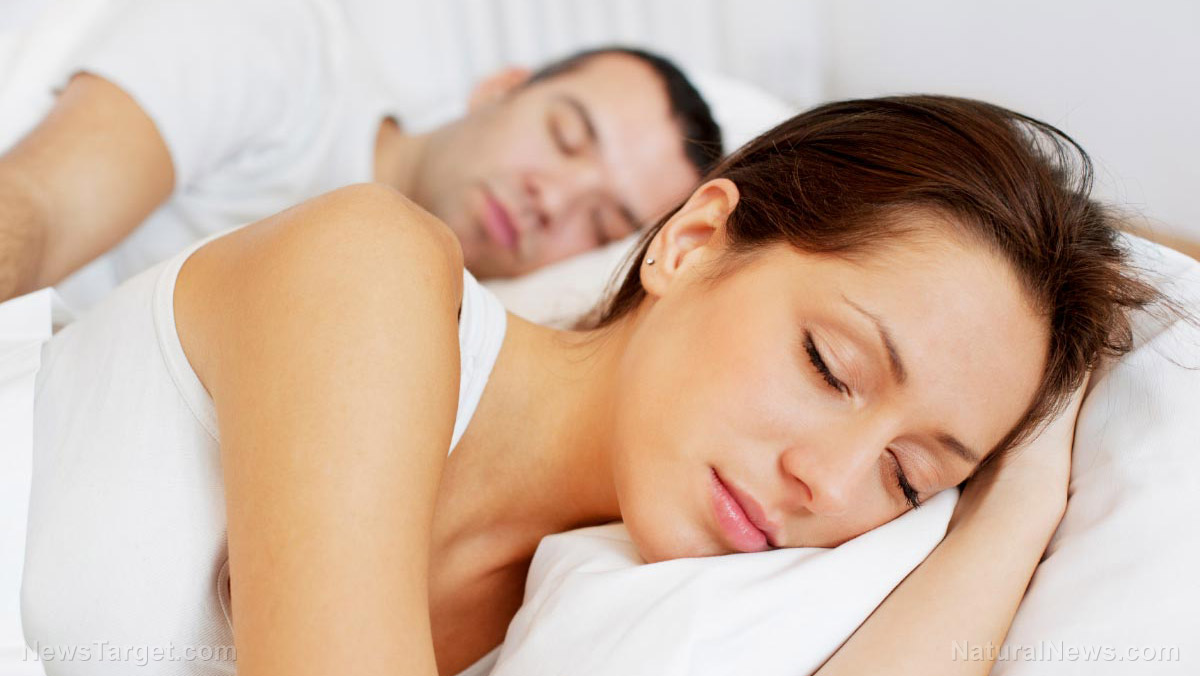Breaking up sleep into two parts, like they did before the Industrial Age, may cure insomnia
04/28/2018 / By Jessica Dolores

The invention of electricity has brought a lot of benefits, like powering appliances that make housework faster and easier for us. But it also created a group of people who find it hard to sleep at night. These insomniacs toss and turn in bed. They wake up at around two or three in the morning, and can’t get back to sleep. When they finally get some sleep in the early hours of the morning, they wake up feeling out of sorts and exhausted because they weren’t able to get enough sleep.
Roger Ekirch, a history professor at Virginia Tech explains that people in the Victorian era went to bed when darkness set in. But electric lights changed all that. People learned to work late at night, slept a lot later after dark, and dozed off until the morning of the next day. This, he explains has become the “new normal.”
Today, insomniacs who sleep in two installments, are looking for ways to sleep for longer hours. They do not realize that this two-part sleep was a way of life centuries ago, before electric power drastically changed our way of life, including the manner in which we sleep.
Statistics have revealed that only one in five individuals enjoy a full night’s sleep. Most of them wake up once at night and have a hard time falling back to sleep.
The solution, according to Dr. Ananya Mandal, is a return to the Victorian age, when people slept at the onset of darkness, dozed off for about five hours, then woke up. They would do household chores during the next hour, read, relax and engage in intimacy, then get their second round of sleep.
Research shows that this biphasic sleep is normal. Each stage in this sleep process performs different functions. Each can consolidate memories, process the day’s events, and help the body recharge.
Researchers recommend a gap of an hour or less between the first and second stages of sleep. They advise against looking at mobile and laptop screens since blue light from these gadgets destroys sleep and keeps the brain awake. The best thing to do is “bore” the brain by reading a slow-paced book and/or tuning in to gentle music until the brain is prepared for the next sleep installment.
Once this practice becomes a pattern, insomniacs can regain peaceful sleep throughout the night and wake up feeling recharged and ready to seize the day.
Still struggling to get a good night’s sleep? Try the following:
- Sleep and wake up at the same time each day – This sets your body’s built-in clock and enhances sleep quality. Go to bed when you feel tired. You’ll be able to sleep well and wake up the next day even without an alarm clock to jolt you awake.
- Nap wisely – Napping may be a good strategy for catching up on lost sleep, but it can keep you awake at night. It’s best to limit naps to 15 to 20 minutes every early afternoon.
- Keep it dark – Turn off the television late at night. Light from the TV set suppress melatonin, and many programs stimulate instead of relax your brain. Draw the curtains and keep your bedroom really dark.
- Exercise regularly during the day –Those who do so sleep better at night and are less sleepy during daytime. Regular workouts fight insomnia and sleep apnea and give you more time to enjoy deep, restorative sleep. Even moderate exercise — like a 10-minute walk a day — enhances sleep quality.
So turn off the lights, get under the sheets and get a good night’s sleep. You’ll wake up feeling great the next morning, ready to face the challenges a new day brings.
Interested in more ways to live healthier? The articles at Cures.news talk about all the natural ways to achieve a healthier body.
Sources include:
Tagged Under: biphasic sleep, good sleep, healthy sleep, insomnia, natural health, restful nights, sleep, sleep habits, sleep patterns, sleep process



















